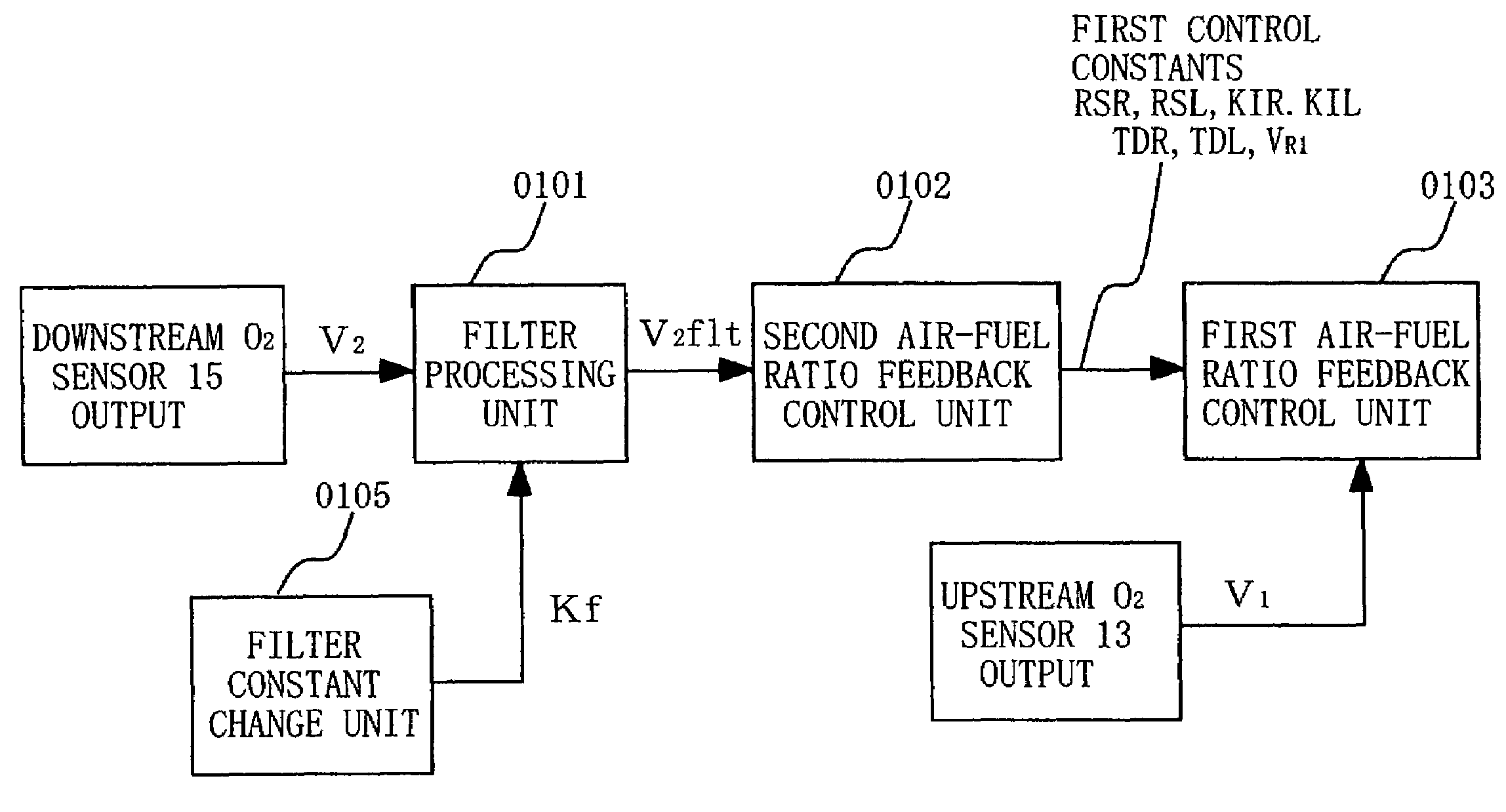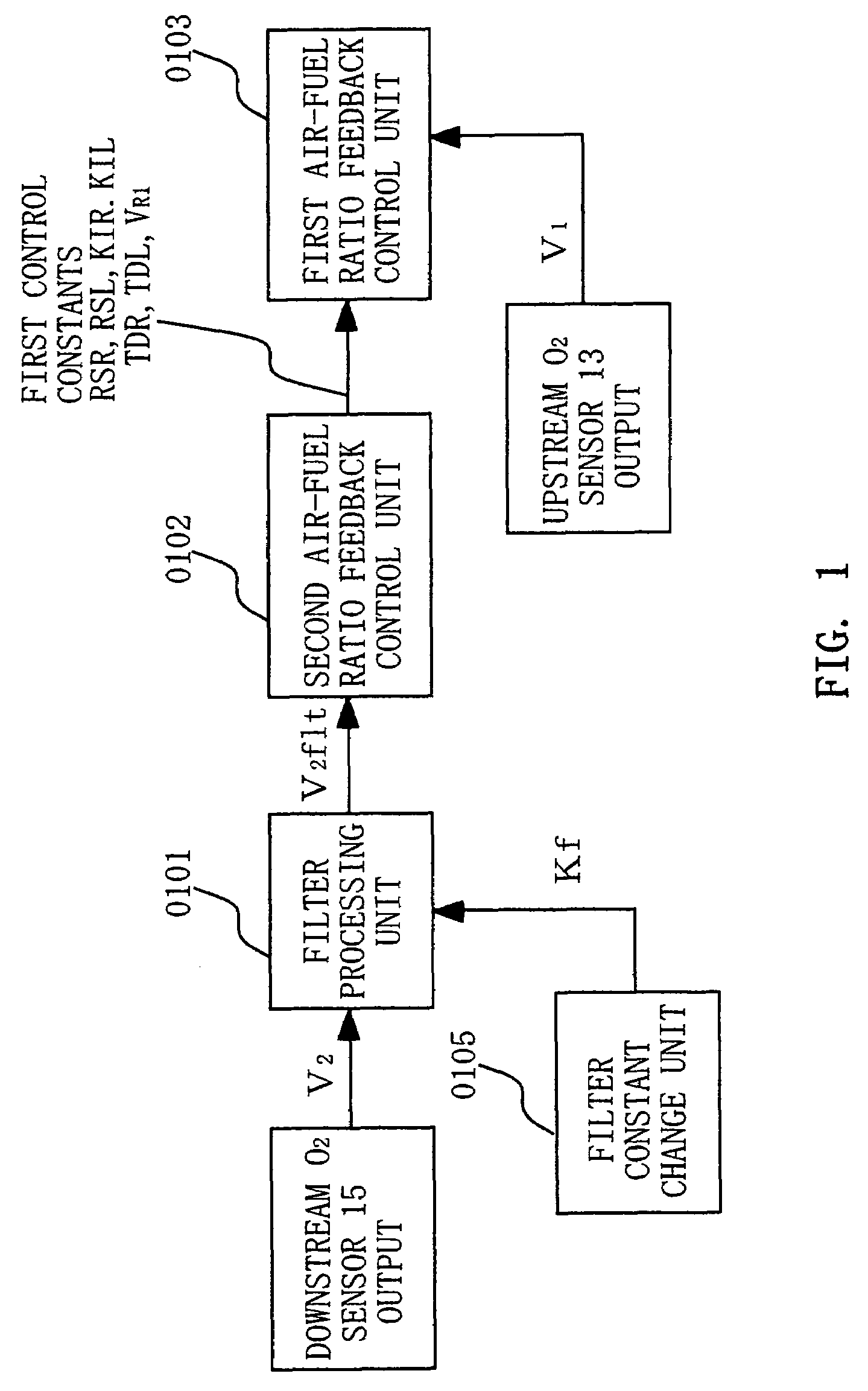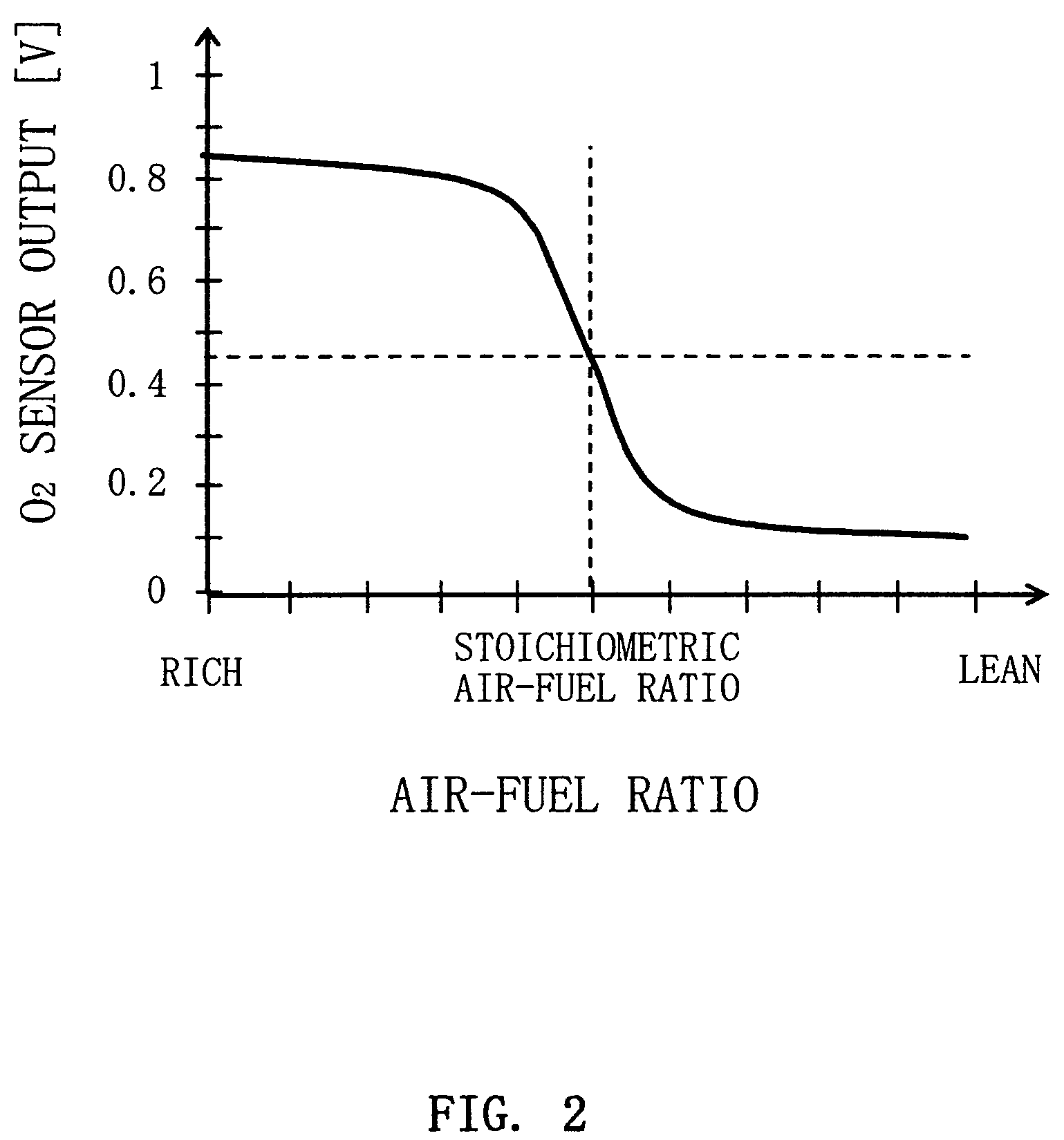Air-fuel ratio control device for internal combustion engine
a technology of air-fuel ratio and control device, which is applied in the direction of electrical control, process and machine control, instruments, etc., can solve the problems of limited heat impact on the downstream osub>2 /sub>sensor, abnormal high exhaust gas temperature during use, and low poisoning
- Summary
- Abstract
- Description
- Claims
- Application Information
AI Technical Summary
Benefits of technology
Problems solved by technology
Method used
Image
Examples
first embodiment
[0035]FIG. 3 shows the configuration of an air-fuel ratio control device for an internal combustion engine according to a first embodiment of the invention. In the figure, an air flow meter 3 is disposed in an intake passage 2 of an internal combustion engine body 1. The air flow meter 3 directly measures the intake air quantity, and has a built-in hot-wire and generates an analog voltage output signal that is proportionate to the intake air quantity. The output signal is supplied to an A / D converter 101 with built-in multiplexer, which is included in a control circuit 10. A distributor 4 is provided with a crank angle sensor 5 and a crank angle sensor 6. The crank angle sensor 5 generates a pulse signal indicating detection of a reference position when the shaft of the distributor 4 is at a point corresponding to, for example, each 720 degrees crank angle. The crank angle sensor 6 generates a pulse signal indicating detection of a reference position when the shaft of the distributo...
second embodiment
[0099]It is sufficient if the downstream O2 sensor is a sensor that can detect the purification state of the upstream catalyst. Since a linear air-fuel ratio sensor, a NOx sensor, an HC sensor, a CO sensor or the like can also control the purification state of the catalyst, the same effects as above can be achieved if such sensors are used. The upstream O2 sensor may be a linear O2 sensor that has linear output characteristics with respect to changes in the air-fuel ratio. In this case, since the upstream air-fuel ratio can be controlled in a similar manner to a λ O2 sensor, the same effects as above can be achieved. The second air-fuel ratio feedback control unit described above is configured from a proportional calculation and an integral calculation. However, even if the configuration also includes a differential calculation, the feedback control can be performed and the same effects as above can be achieved.
[0100]The, second air-fuel ratio feedback control unit described above i...
PUM
 Login to View More
Login to View More Abstract
Description
Claims
Application Information
 Login to View More
Login to View More - R&D
- Intellectual Property
- Life Sciences
- Materials
- Tech Scout
- Unparalleled Data Quality
- Higher Quality Content
- 60% Fewer Hallucinations
Browse by: Latest US Patents, China's latest patents, Technical Efficacy Thesaurus, Application Domain, Technology Topic, Popular Technical Reports.
© 2025 PatSnap. All rights reserved.Legal|Privacy policy|Modern Slavery Act Transparency Statement|Sitemap|About US| Contact US: help@patsnap.com



